Home »
Blog » Six Sigma » Page 24
Improvement Insights Blog
Latest "Six Sigma" Posts
You can use Excel’s data formatting, commenting and filtering tools to help visualize and clarify your data.
Highlighting: Select cells and click on Home-Fill Color to highlight cells:
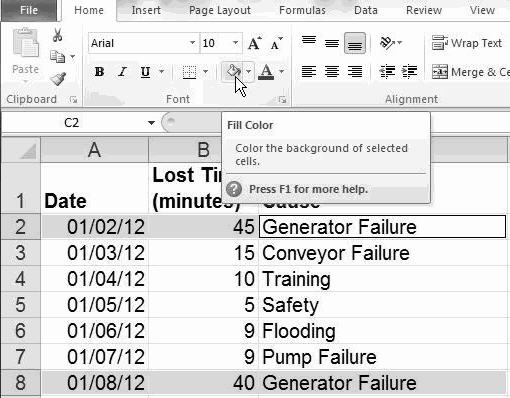
Commenting: To add comments to any cell, click on Data-Insert Comment:

Subset: To select a subset of your data, click on Data-Filter and select the desired content:

Excel will simplify and streamline your data for ease of analysis:
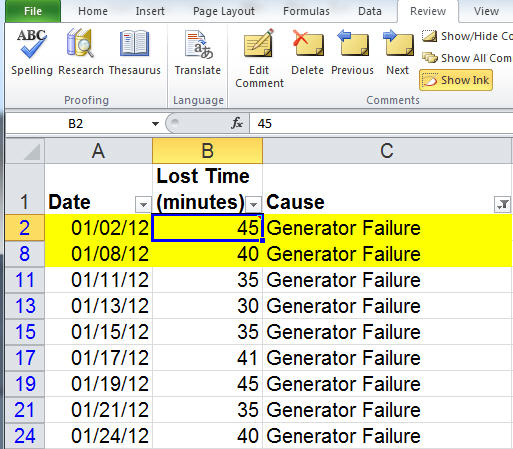
Excel has many powerful data exploration and visualization tools. Play with them!
Continue Reading "Data Visualization and Exploration In Excel"
Posted by Jay Arthur in Excel, Six Sigma.
The American Statistical Association (ASA) has issued a statement about statistical significance and p values. It quotes ScienceNews article from 2010: “It’s science’s dirtiest secret: The ‘scientific
method’ of testing hypotheses by statistical analysis stands on a flimsy foundation.”
Six Sigma spends a lot of time on hypothesis testing using p values, but our use of p values may lack the rigor required. The ASA states: By itself, a p-value does not provide a good measure of evidence regarding a model or hypothesis.
Continue Reading "p value’s Dirty Little Secret"
Posted by Jay Arthur in Six Sigma.
Microsoft added a box and whisker plot to Excel 2016, but it’s not everything you might hope for. Here’s an Excel 2016 box and whisker plot:
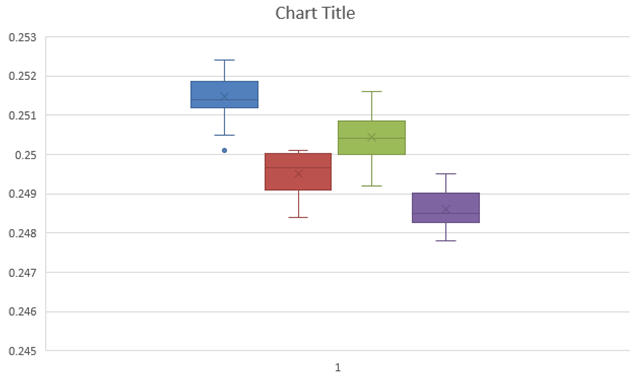
You might notice that the whiskers have a crossbar on the end. It seems to have a spare “x” in the middle of each box and it’s a little hard to see where the median is. And there are unnecessary gridlines that are considered chartjunk. It does, however, show the outlier below the first box.
Here’s what the QI Macros Box and Whisker Plot looks like:
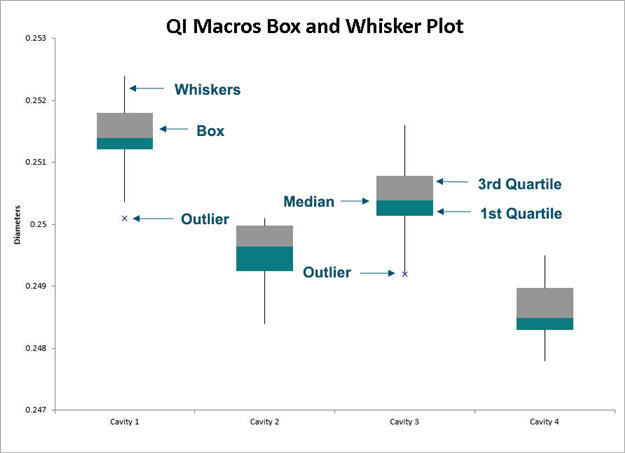
The whiskers are whiskers. The median is easily visible.
Continue Reading "What’s Wrong with the New Excel 2016’s Box and Whisker Plot?"
Posted by Jay Arthur in Excel, QI Macros, Six Sigma, Statistics.
I first learned how to draw Pareto charts by hand using engineering paper if you can believe it. Our trainers were very specific about how they were to be drawn. One of the earliest references I can find is Kaoru Ishikawa’s Guide to Quality Control. Here’s the correct way to draw a Pareto chart using data from Ishikawa’s book:

The bars should be touching and the cumulative percentage line should go from corner to corner of the first bar.
Unfortunately, most Pareto charts drawn by computer look like the following one, bars not touching and cumulative line running out of the center of the top of the first bar.
Continue Reading "The Correct Way to Draw a Pareto Chart"
Posted by Jay Arthur in QI Macros, Six Sigma.
Customers invariably want three things from any supplier; they want you to be better, faster and cheaper that your competition and your past performance. It’s vital to find out what they want. Sometimes it’s as easy as asking: “What can we do better?” and then listening carefully to the response.
One way to figure out what customers want is to develop a voice of the customer (VOC) diagram and keep it updated.
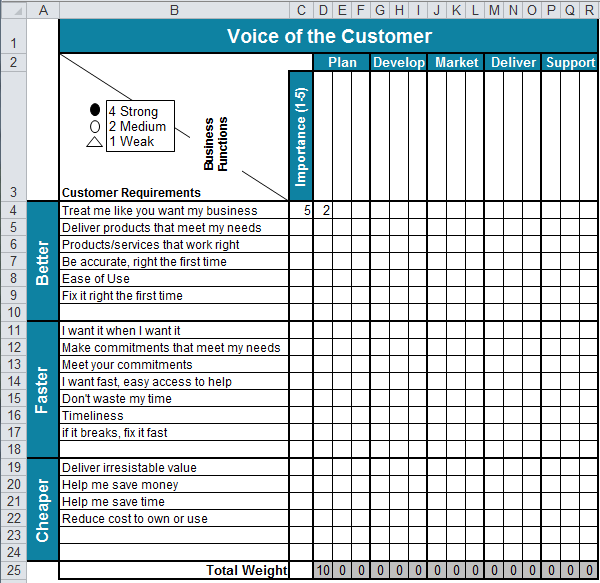
Along the left-hand side are the customer’s requirements for better, faster and cheaper. The goal is to capture exactly what they say in their language. Then translate what they say into business changes that deliver on those requirements.
Continue Reading "What Do Customers Want?"
Posted by Jay Arthur in QI Macros, Six Sigma.
Every businesses wastes a quarter to a third of total expenses 1) fixing stuff that shouldn’t be broken (rework) and 2) throwing away stuff that can’t be fixed (scrap). There are four main costs of poor quality:
- Internal failures that cause rework and scrap.
- External failures that increase returns (to be reworked or scrapped), billing adjustments, concessions and customer complaints.
- Inspection costs of incoming materials,inspection of work in process and final inspection and testing.
- Prevention costs (i.e, Lean Six Sigma)
Inspection, failure, rework and scrap can easily devour much of a companies time and money. Preventing these problems is far less expensive, but requires focus and dedication to eliminate mistakes and errors.
Continue Reading "Cost of Poor Quality"
Posted by Jay Arthur in Six Sigma.
I have found that a high number of people have a fear of math. They seem to think that you are either born with math skills or you aren’t.
In the Jan/Feb 2016 Scientific American Mind, author Carol Dweck reviews the most recent research into The Remarkable Reach of Growth Mind-Sets.
One study by Kathy Liu Sun found that middle school math teachers that embraced growth mind-set but did not back it up with growth mind-set teaching methods such as emphasizing underlying concepts, giving feedback and giving students a chance to revise and resubmit their work caused their students to develop a fixed mind-set.
Continue Reading "Is a Fear of Math Stopping Your Six Sigma Projects?"
Posted by Jay Arthur in QI Macros, Six Sigma.
Steve Harvey misread the results of the final ballot at the Miss Universe 2015 pageant. Was it the cue card or the teleprompter?
Here’s the cue card:

Could the card have been designed in ascending order?

Did the teleprompter operator misread the card or Steve?
Is this the same problem the U.S. had with the “hanging chad” in the 2000 presidential election in Florida?
Is bad form design causing mistakes and errors?
Continue Reading "Miss Universe 2015 Cue Card Redesigned"
Posted by Jay Arthur in Jay Arthur Blog, Six Sigma.
For many years, I’ve been endlessly annoyed by the mistakes and errors of every service and product business I use. From crappy cell phone service to mistakes on restaurant bills. I have hesitated to write about these experiences because it seemed too much like whining, but my daughter Tina introduced me to the concept of the “Burnt Toast Society.”
Burnt Toasters will eat burnt toast at a restaurant rather than send it back. I think American consumers put up with too much mediocrity. So I have decided to start complaining online about every burnt toast experience.
I recently flew back on Frontier Airlines from the Institute for Healthcare Improvement (IHI) conference in Orlando.
Continue Reading "The Burnt Toast Society"
Posted by Jay Arthur in Six Sigma.
At IHI 2015, the National Patient Safety Foundation released its new report Free From Harm. Download from www.npsf.org/free-from-harm. The nuts-and-bolts of the report: patient safety is still a big problem. The report recommends eight steps to rapidly improve patient safety.
Some hospitals are already using “High Reliability Healthcare” methods (Lean, Six Sigma and Change Management) to drive harm to ZERO. Memorial Hermann Hospital has had ZERO hospital acquired infections (HAIs) for multiple years. ZERO complications from blood transfusions. Memorial Hermann made Patient Safety their CORE VALUE and has pursued it relentlessly. And they are not alone.
The new standard for patient safety is ZERO defects, mistakes and errors.
Continue Reading "Hospital’s New Goal – Zero Harm"
Posted by Jay Arthur in Lean, Service, Six Sigma.












